Chocolate paskha, aka the next level cheesecake for Easter (RECIPE)
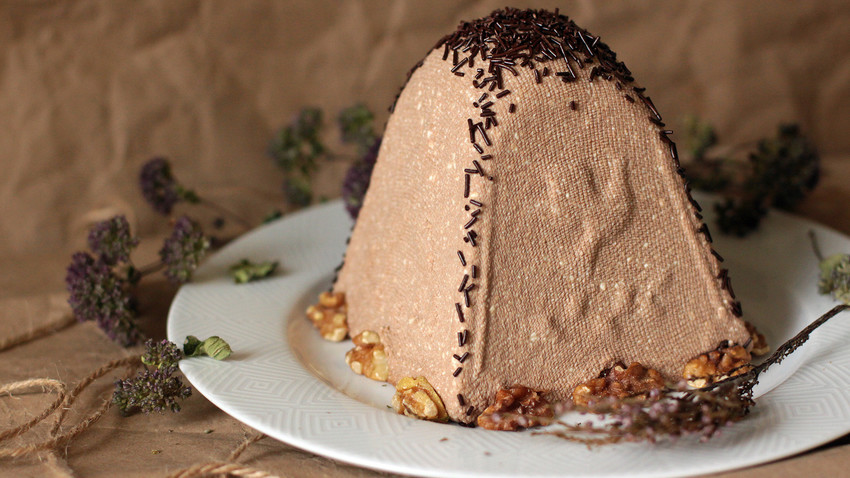
Paskha is not just the Russian word for Easter, but it’s also a dish made with curd cheese in the form of a truncated pyramid that symbolizes the Tomb of Christ.
Victoria DreyPaskha is one of the traditional Easter dishes used to celebrate the Resurrection: it is formed in a truncated pyramid-shaped mold that symbolizes the tomb of Christ.
This dish is special for me because we cook and enjoy it exclusively once a year. Paskha is also the Russian word for Easter, and paskha literally consists of slabs of butter, rich tvorog, or farmer’s cheese, and heavy cream; but it’s all worth it. If you’d like to try making paskha but don’t have any tvorog on hand, then you can try it with a mix of cream cheese and cottage cheese. All of these ingredients, by the way, are strictly forbidden during Lent before Orthodox Easter.
As for the taste and consistency, I’d say it’s more like a cheesecake, but nevertheless, they are far from identical: paskha does not have a biscuit base, but rather has more tvorog than cream cheese consistency and ‘cooks’ in the fridge, not in the oven.
In my family we’ve always taken Easter cooking quite seriously: my mom bakes dozens of kulichi and, of course, rich tvorog paskha, which is no doubt our favourite Easter dish. According to Orthodox tradition, you can cook ritual Easter dishes such as paskha, kulichi and eggs not only for the major festive day but also during the first week of Easter, the so-called Bright Week. During this time my mother diligently makes at least three paskhas in order for family and friends to enjoy it full-on. She always makes different ones: plain vanilla paskha; one with raisins, chopped nuts and dried fruits; and chocolate paskha, which always ends being the most scrumptious of them all. Also, I love this trusty recipe because it does not take much time and culinary skills to make: you literally only need to mix all the ingredients, transfer the mixture into a mold and wait patiently until your paskha sets in the fridge, and becomes rich and creamy.
Ingredients:
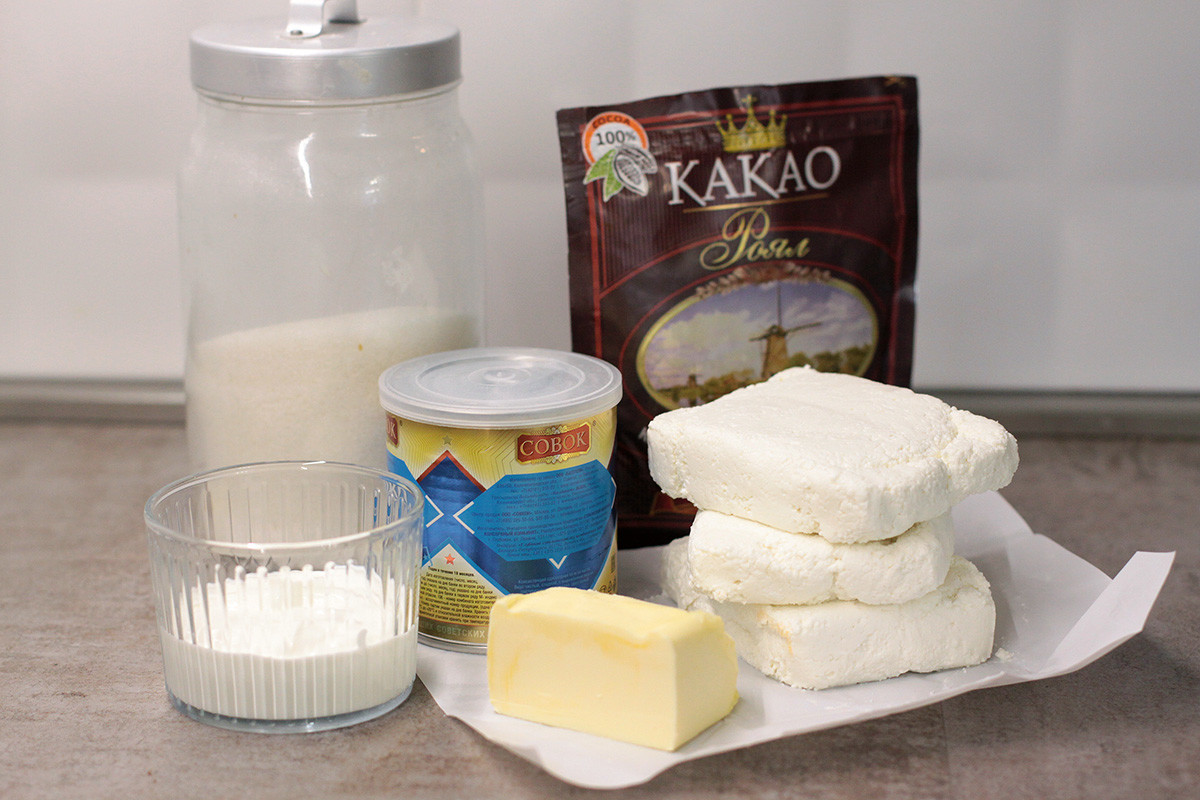
- 500g soft tvorog/ farmer cheese/ curd (at least 9% fat content)
- 150g unsalted butter
- 70g sour cream or heavy cream (at least 20% fat content)
- 130g condensed milk
- 50-70g sugar
- 2 heaped tbsps cocoa powder
- 1 tsp vanilla extract
- ¼ tsp salt
Cooking:
1. The key to scrumptious paskha is having the proper tvorog - farmer’s cheese or curd – depending on what you can find in your local store. It should be dry and soft, not grainy and too liquidy. In case you feel that your tvorog is not soft enough, there’s a technique to help: simply pass it through a sieve, better twice, to get a nice and smooth consistency.
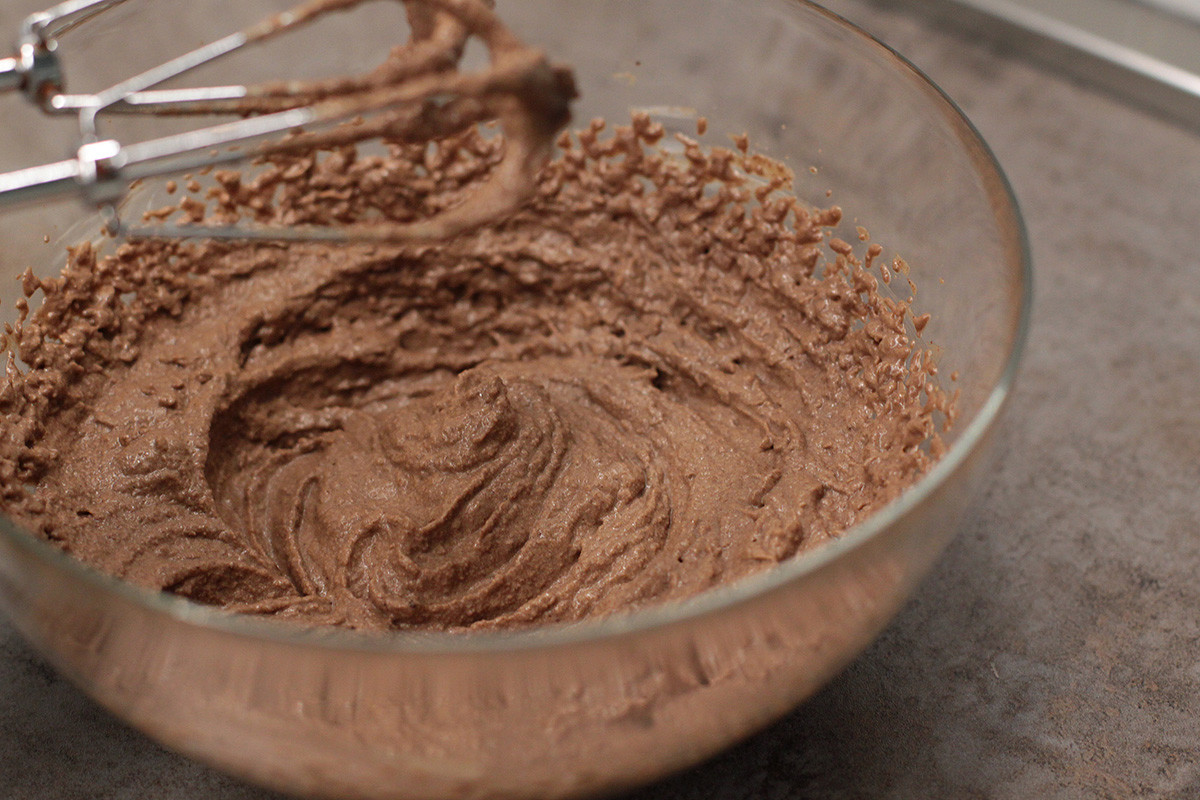
2. The tvorog that I use is initially soft enough, so I skip this step and start by mixing ingredients right off the bat. In a large bowl put softened butter, sugar, salt, vanilla, sifted cocoa powder and sour cream or heavy cream. Work it with a mixer with whisk attachments for a couple of minutes until the mixture becomes smooth and airy.
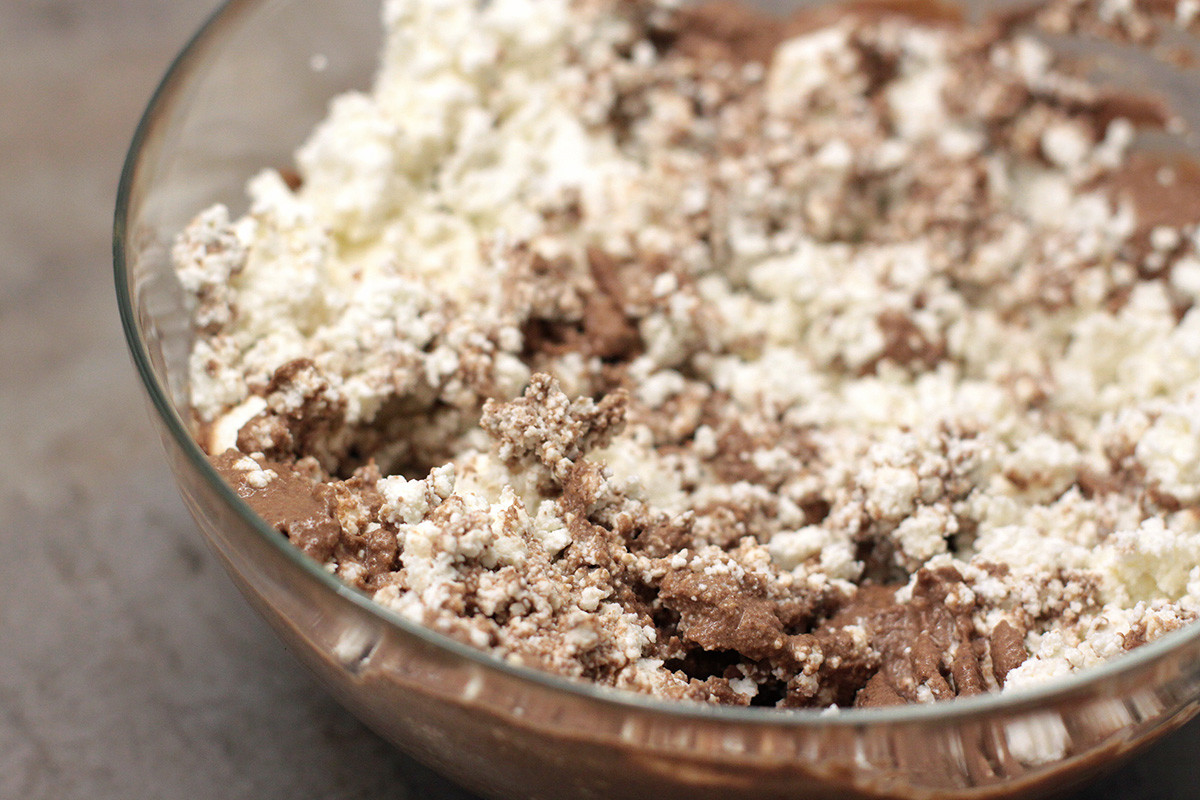
3. Next, add your tvorog and start gently but steadily stirring with a spatula.
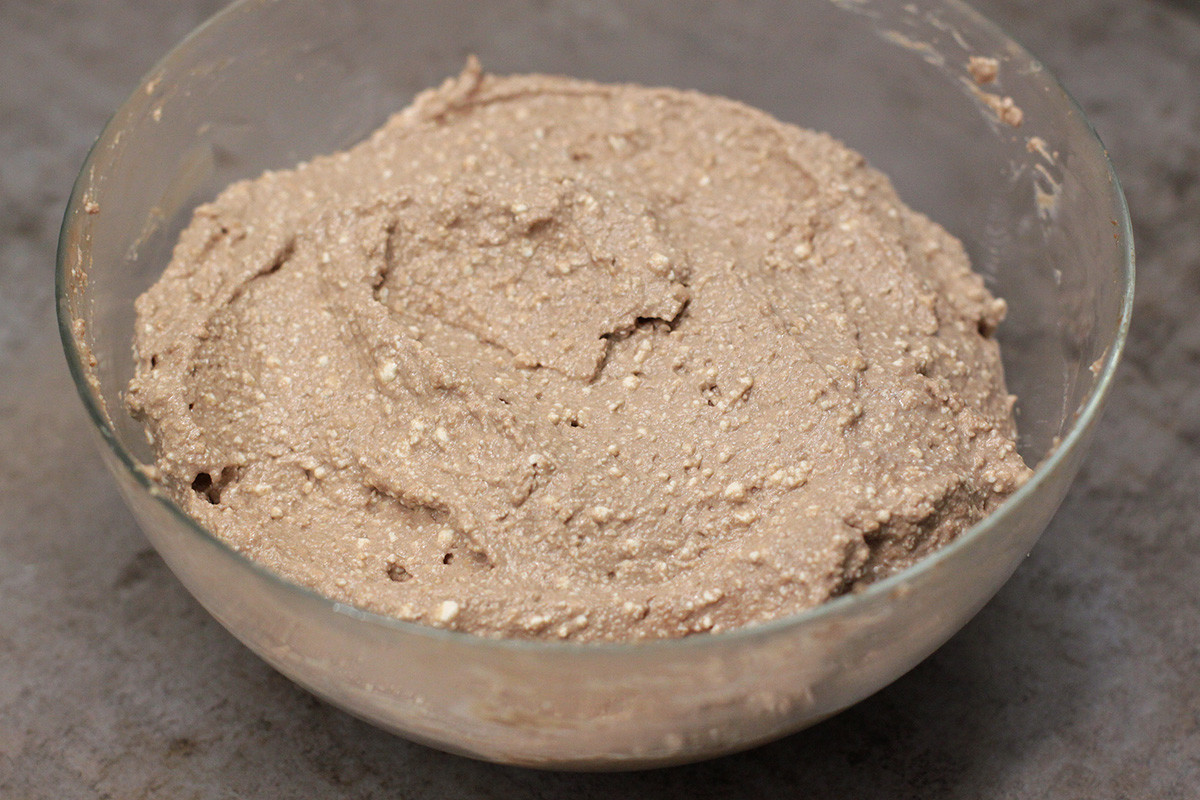
4. Finally, add condensed milk and whisk with a mixer on a low speed again until very smooth. You may actually replace condensed milk with plain sugar in case you cannot find it, but I personally love my paskha with condensed milk. I feel that this makes it more creamy. Anyway, you should get a quite smooth and paste-like mixture that is the base of your future paskha.
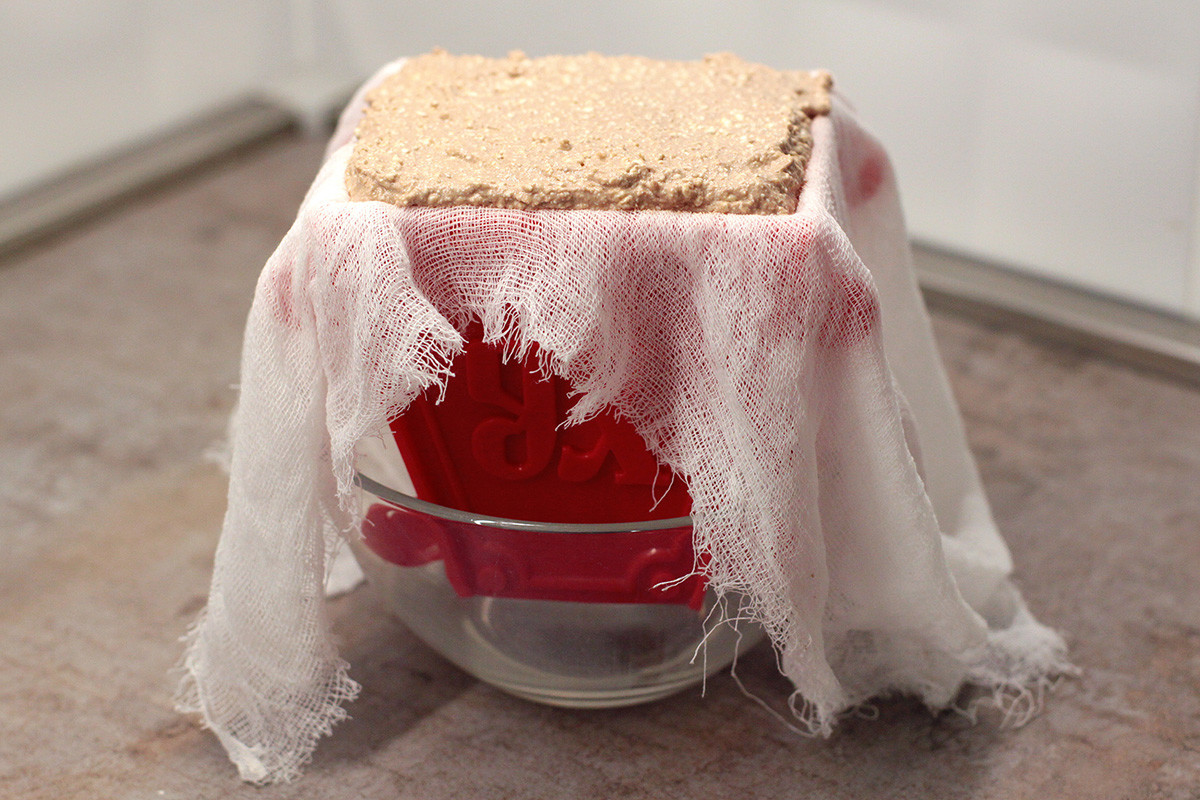
5. Here comes the most important step: fill the mold with tvorog paste. If you’re lucky enough to have or find a special paskha mold – great; if not, then use any mold that is pyramid-like or use a strainer. Line it with two layers of dampened gauze or cheesecloth – I always buy mine in a nearby drugstore. Carefully pour the tvorog mixture inside and fold the ends of gauze on top.
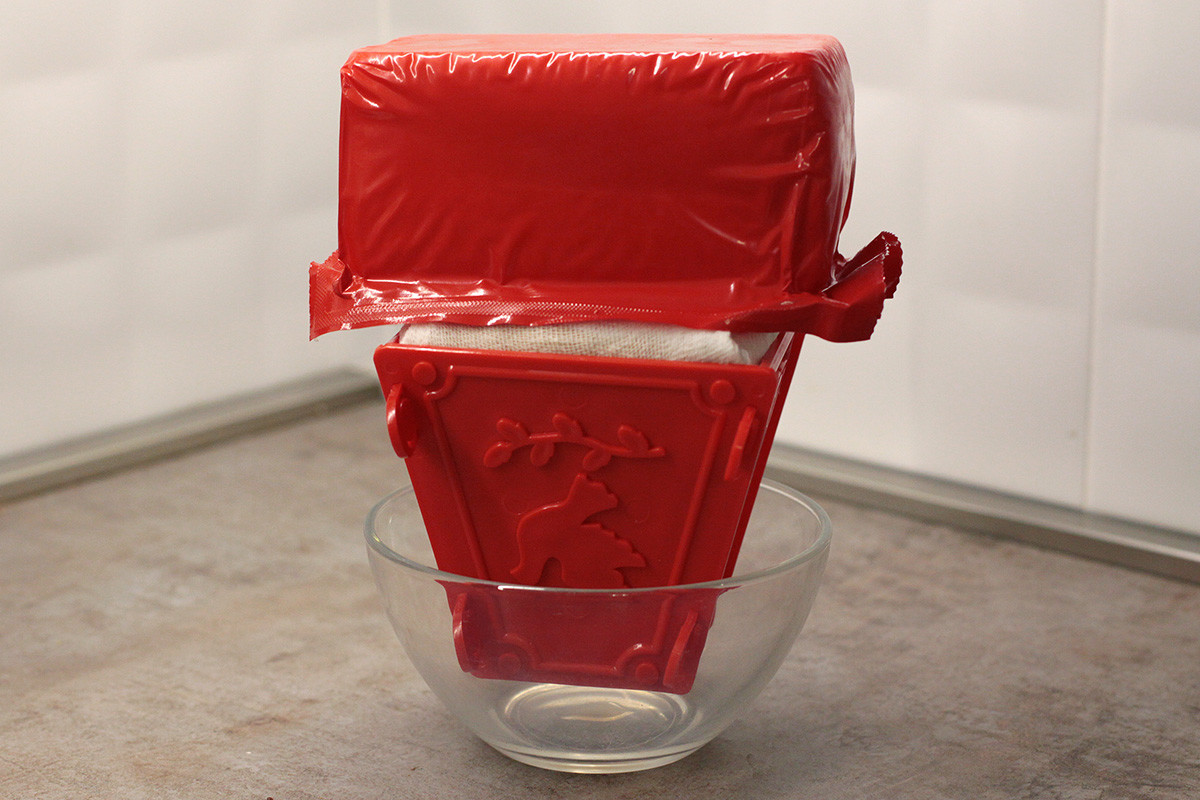
6. Place a bowl under the mold to catch the drips of whey. Then, put the lid on top and weigh down the paskha with something heavy – I use a block of cheese. Next, carefully place this in the refrigerator and let the paskha drain for overnight at least.
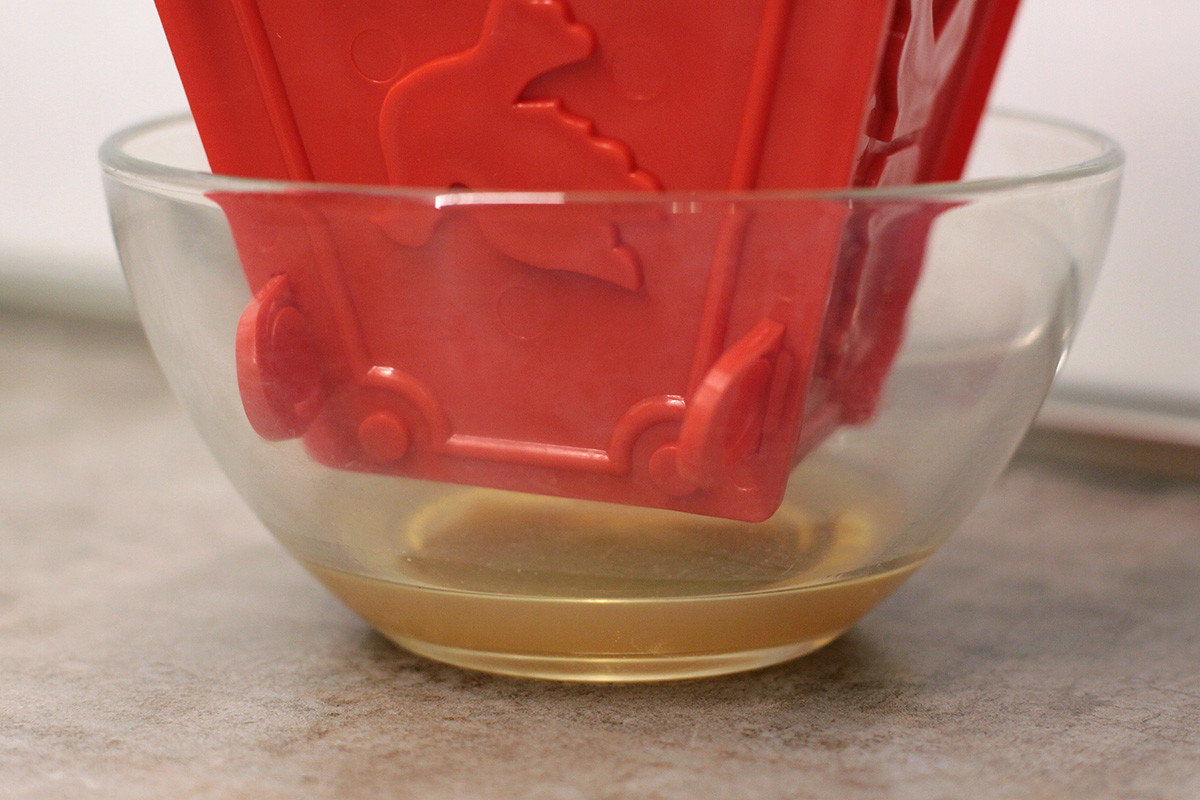
7. Take your time; don’t hurry. If your paskha doesn’t drain properly it’s most likely to collapse when you remove it from the mold. After about 15 hours you’ll notice some whey in the bowl under the mold; this means you did everything right.
8. Remove the weight, pull back the gauze and gently invert the mold onto a serving plate; then remove your paskha and gauze.
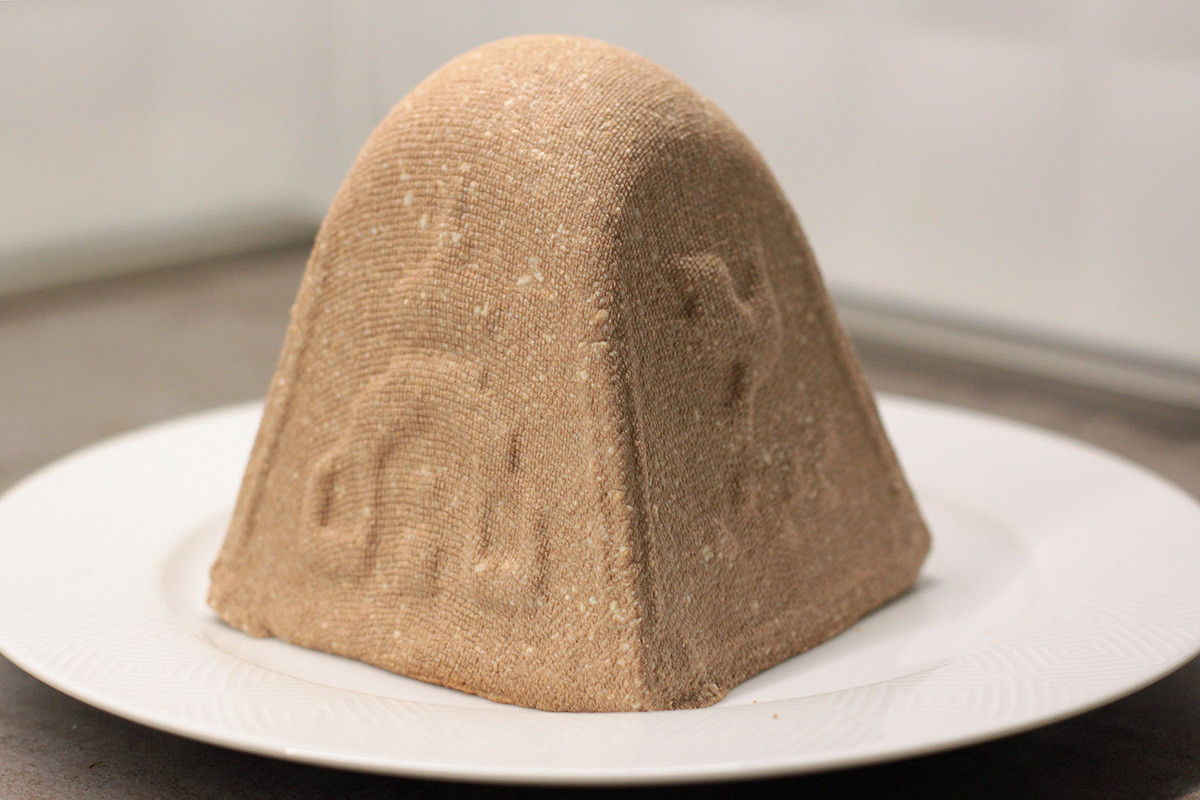
9. The decoration is your choice: use nuts, dried fruits, Easter sprinkles – whatever you like. A really good paskha should be so rich you can cut it into thin slices. Priyatnogo appetita and happy Easter!
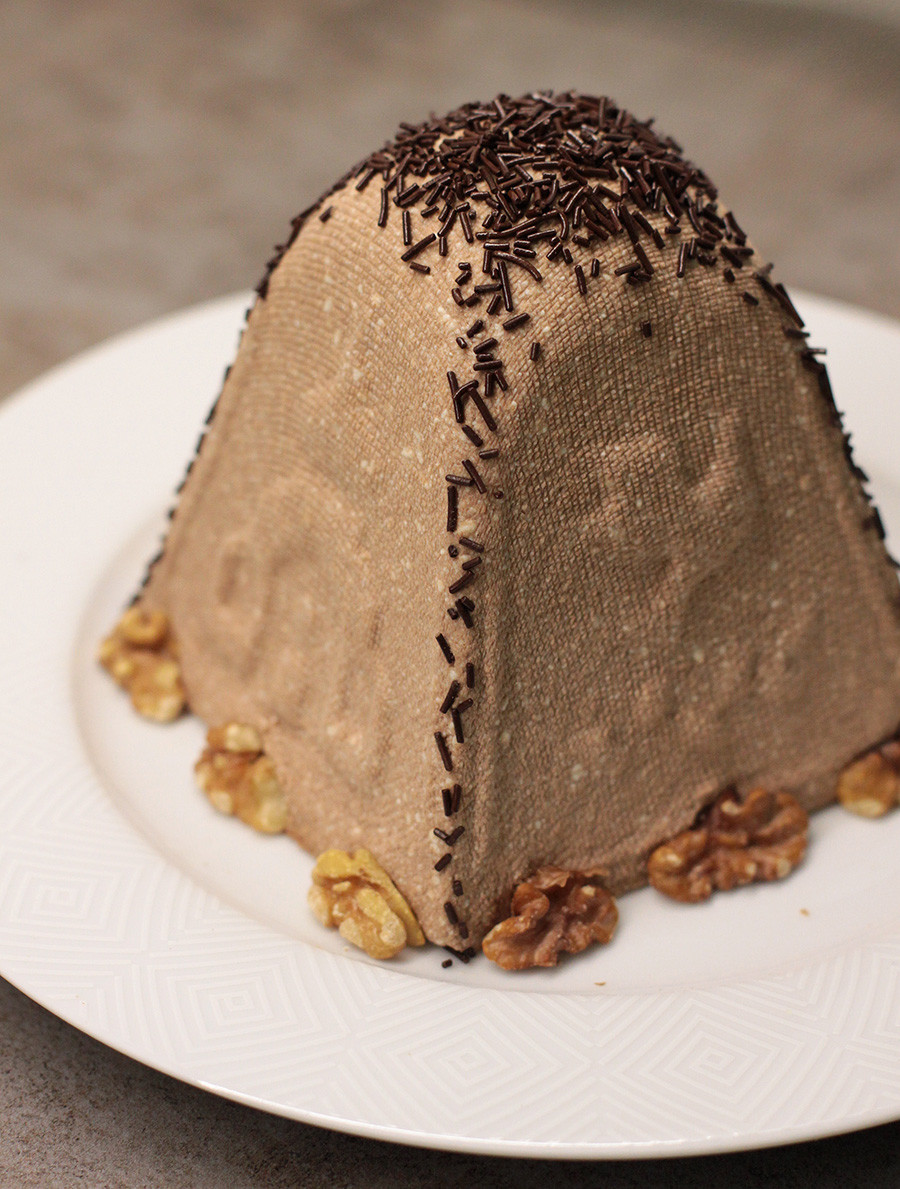
Read more: 4 dishes that Russian Orthodox Christians make for Easter
If using any of Russia Beyond's content, partly or in full, always provide an active hyperlink to the original material.
Subscribe
to our newsletter!
Get the week's best stories straight to your inbox